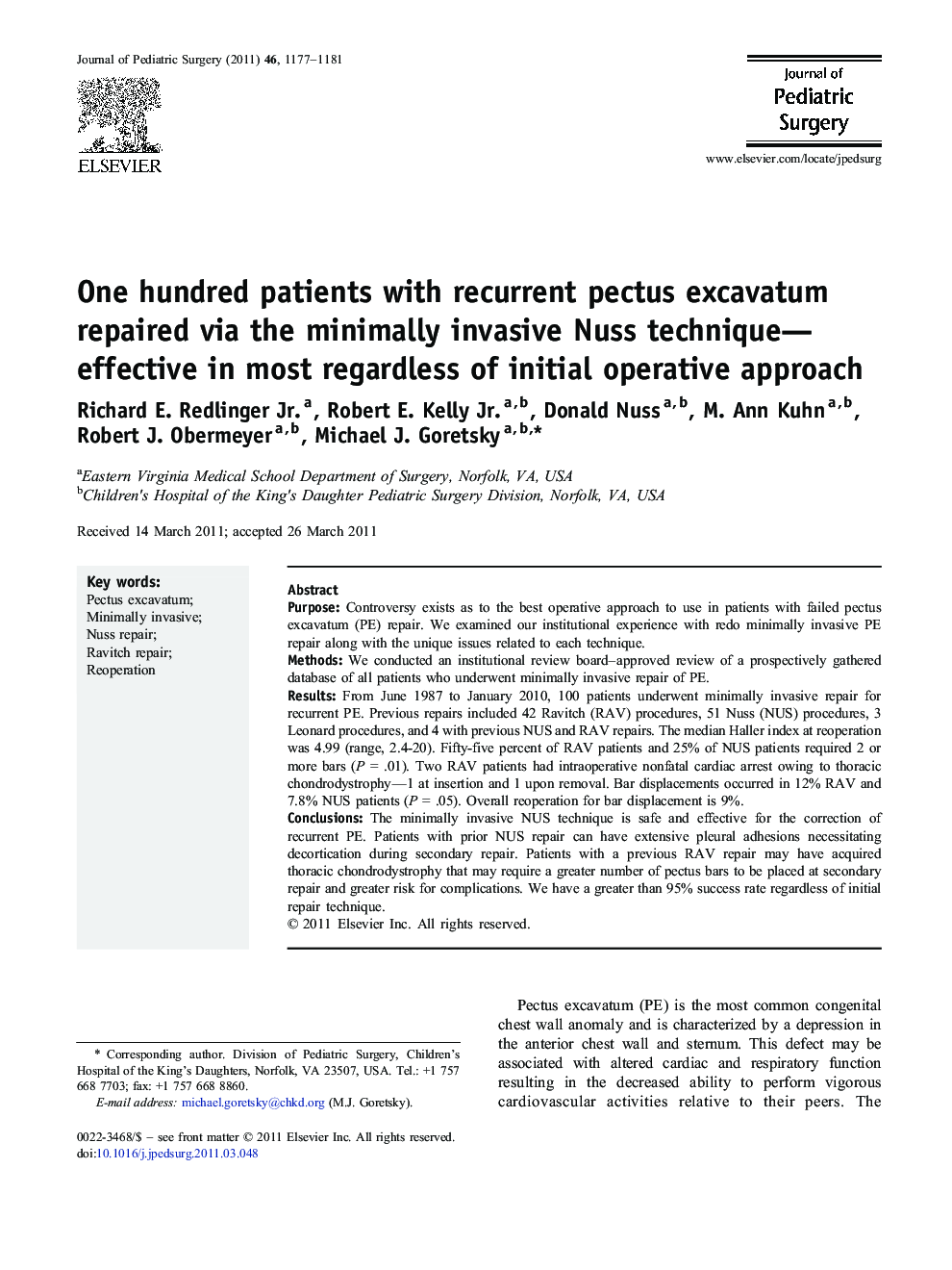| کد مقاله | کد نشریه | سال انتشار | مقاله انگلیسی | نسخه تمام متن |
|---|---|---|---|---|
| 4157092 | 1273786 | 2011 | 5 صفحه PDF | دانلود رایگان |

PurposeControversy exists as to the best operative approach to use in patients with failed pectus excavatum (PE) repair. We examined our institutional experience with redo minimally invasive PE repair along with the unique issues related to each technique.MethodsWe conducted an institutional review board–approved review of a prospectively gathered database of all patients who underwent minimally invasive repair of PE.ResultsFrom June 1987 to January 2010, 100 patients underwent minimally invasive repair for recurrent PE. Previous repairs included 42 Ravitch (RAV) procedures, 51 Nuss (NUS) procedures, 3 Leonard procedures, and 4 with previous NUS and RAV repairs. The median Haller index at reoperation was 4.99 (range, 2.4-20). Fifty-five percent of RAV patients and 25% of NUS patients required 2 or more bars (P = .01). Two RAV patients had intraoperative nonfatal cardiac arrest owing to thoracic chondrodystrophy—1 at insertion and 1 upon removal. Bar displacements occurred in 12% RAV and 7.8% NUS patients (P = .05). Overall reoperation for bar displacement is 9%.ConclusionsThe minimally invasive NUS technique is safe and effective for the correction of recurrent PE. Patients with prior NUS repair can have extensive pleural adhesions necessitating decortication during secondary repair. Patients with a previous RAV repair may have acquired thoracic chondrodystrophy that may require a greater number of pectus bars to be placed at secondary repair and greater risk for complications. We have a greater than 95% success rate regardless of initial repair technique.
Journal: Journal of Pediatric Surgery - Volume 46, Issue 6, June 2011, Pages 1177–1181